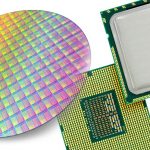Not PC segment, not necessarily Application Processor for Mobile, despite the power efficiency advantage versus a bulk technology. After several weeks filled by very animated and controversial discussion about FD-SOI cost, thanks to Semiwiki bloggers and readers, it seems interesting to elevate the debate and try to figure… Read More
Tag: fdsoi
Keywords: FD-SOI, Cost, FinFET
How to synthesize a pretty good article Is SOI Really Less Expensive, and even more important the impressive amount of comments (56) generated? Let’s start with the initial article. Pretty good, but slightly biased, when you carefully dissect it, like I did in one of the comments (you can find it in-extenso at the end of this post).… Read More
Is SOI Really Less Expensive?
Introduction
There have been some claims made recently that planar Fully Depleted Silicon On Insulator (FDSOI) is less expensive than bulk planar processes and FinFETs at various nodes. Some of these claims suggest that FinFETs in particular are significantly more expensive. My company, IC Knowledge LLC produces the most widely… Read More
Synopsys Galaxy Platform & Lynx Design System supports FD-SOI
This is a new brick that Synopsys brings to build FD-SOI credibility. We have talked at Semiwiki about FD-SOI technology developed by the LETI and STM, and recently endorsed by Samsung Foundry, offering a more than credible second source to STM. And we have said that the FD-SOI introduction will need to be supported by EDA and IP vendors… Read More
Virtual Fabrication: Not just for fabs. Fabless companies can benefit from more visibility into process technology
Ever since I started talking about Virtual Fabrication I have mostly looked at it from the manufacturers’ perspective, where it has obvious benefits to develop and model new process technology. But what about the fabless design concept and indeed even the semiconductor IP world that has spawned from it as well? It seems that Virtual… Read More
FD-SOI : SMIC or…Who else?
In fact, as of today, nobody can refer to an official statement made by any STM executive about name of the foundry able to process FD-SOI wafers in 28nm. We just know that the agreement is about to (or has been) signed… But we may speculate, and try to use our rational thinking. For example, the Semiwiki readers had the opportunity to… Read More
SEMulator3D 2014 – New Enhancements for Virtual Fabrication in the 3D IC Era
A Virtual Platform for any kind of design or manufacturing in any discipline of science or engineering (electrical, mechanical, aeronautics etc.) must be able to provide an accurate representation of an actual design/product in a fraction of time and cost it takes to build working prototypes. In the case of semiconductors at … Read More
The Technology to Continue Moore’s Law…
Can we agree about the fact that the Moore’s law is discontinuing after 28nm technology node? This does not mean that the development of new Silicon technology, like 14nm or beyond, or/and new Transistor architecture like FinFET will not happen. There will be a market demand for chips developed on such advanced technologies: mobile… Read More
DSP running 10 times faster at ultra-low voltage?
The LETI and STMicro have demonstrated a DSP that can hit 500 MHz while pulling just 460mV – that’s ten times better than anything the industry’s seen so far. Implemented on a 28nm FD-SOI technology, with ultra thin forward body biasing (UTFBB) capability (used to decrease Vth), this DSP can also be exercised at higher voltage when… Read More
If you still think that FDSOI is for low performance IC only…
…then you should read about this benchmark result showing how digital power varies with process corners, for high-speed data networking chip, not exactly the type of IC targeting mid-performance mobile application. Before discussing the benchmark results, we need to have some background about this kind of ASIC chip. Such a … Read More




